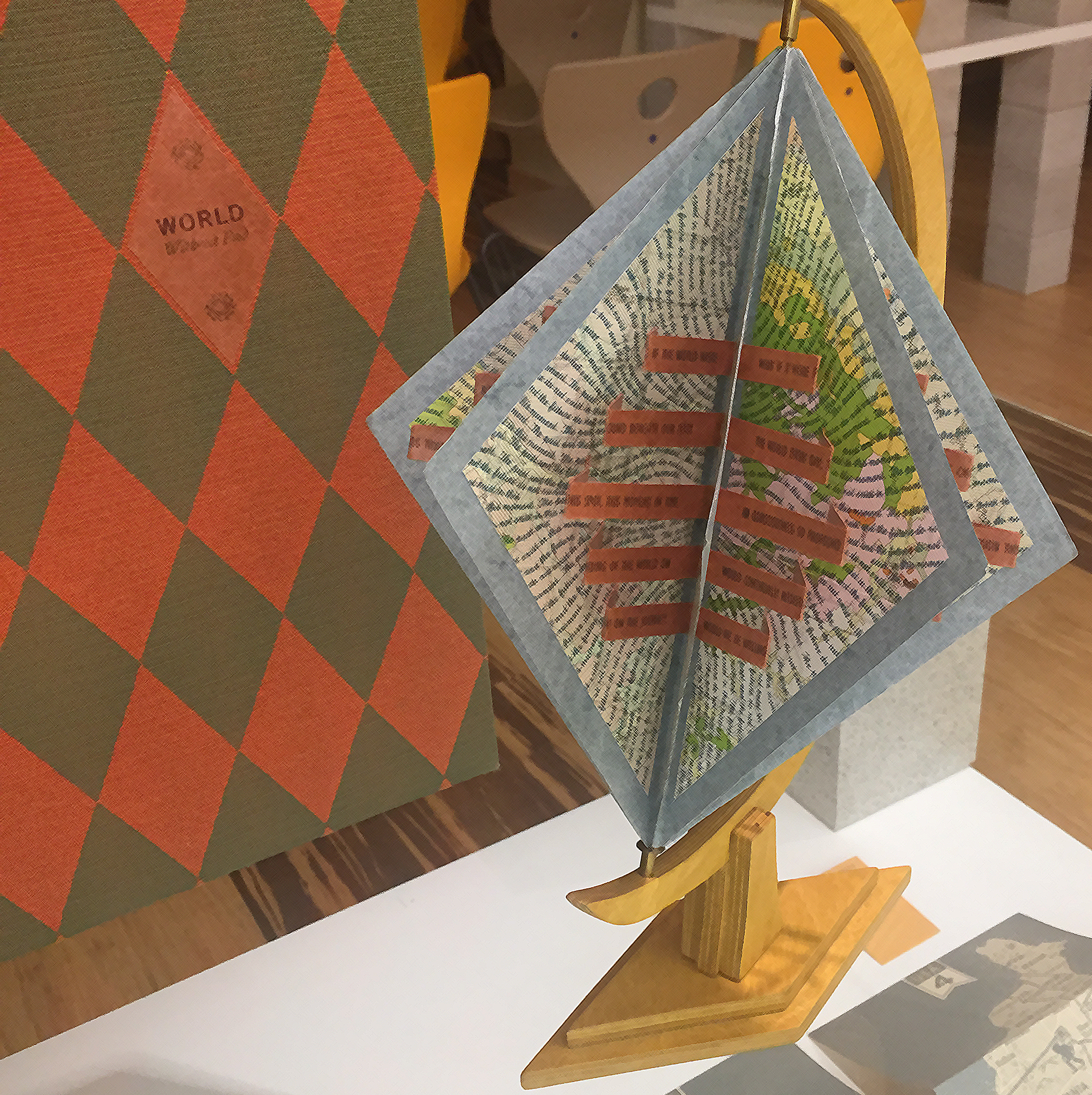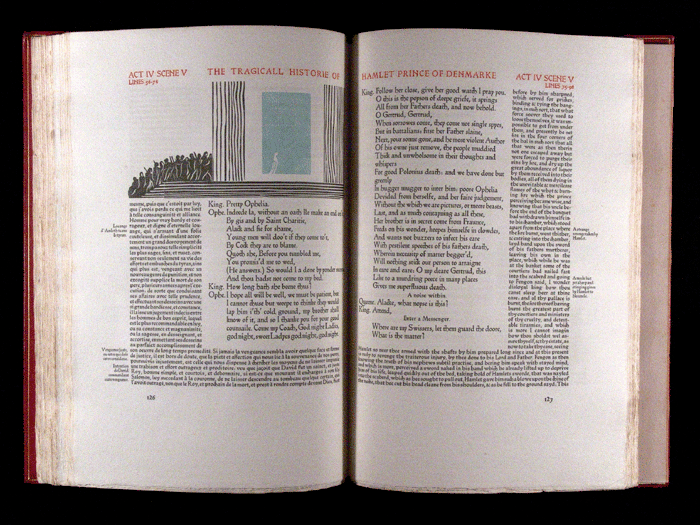Books as Aesthetic Objects


By Cranach Press
Fine Press
1929
The Tragedie of Hamlet Prince of Denmarke. Edited by J. Dover Wilson Litt.D. from the text of the second quarto printed in 1604-05 "according to the true and perfect coppie” with which are also printed the Hamlet stories from Saxo Grammaticus and Belleforest and English translations therefrom. Illustrated by Edward Gordon Craig. Weimar: The Cranach Press, 1930.
Edward Gordon Craig, son of Edward Godwin and actress Ellen Terry, was a British actor, director, and artist. After theatrical commissions at the Moscow Art Theatre as well as in European venues, Gordon.Craig met Count Harry Kessler, the arbiter of taste in Weimar Germany, who invited him to produce this Hamlet at the Cranach Press. The woodcuts fulfill Gordon Craig’s ideological notion that actors can interfere between Shakespeare’s words and an audience; in fact he is best known in this country as an innovative puppeteer.
The argument can certainly be made that Hamlet is the greatest work written in English; in the words of Professor Adela Spindler Roatcap “there is no other Hamlet which can compare [to this edition]” (Fine Print, v.14, January 1988) because of its scholarly excellence and its classic proportions. Most noteworthy are the severe and innovative woodcut illustrations by Edward Gordon Craig, the placement of Shakespeare’s text in the center of the pages, surrounded not by notes, but by excerpts from source texts; and the separately sewn pamphlet of notes by J. Dover Wilson for which a separate pocket has been bound into the book, “for the convenience of readers who may desire to lay them open beside the text of the play.”
Roatcap wrote in Fine Print: "Take up a copy of The Tragedie of Hamlet Prince of Denmarke, printed and published by the Cranach Press and you have before you the physical embodiment of the greatest drama in the English language. In this book the text of the play is framed by its own history – marginal texts presenting early versions of the story allow you to make a choice: to read the play alone without its precursors, or to steep yourself in the anthropology of Hamlet in the original languages. Have you questions about the meaning of Elizabethan words, or obscure passages? Additional scholarly information is readily available . . . . Everything in the book echoes the monumentality of the play: the size of the folio pages are in accord with its importance, yet they do not overwhelm: the proportions are classic – and as you turn the pages, if you are reading one of the 300 copies on handmade Monval paper, you experience its rich, dense but soft texture, on which red headlines and captions abate the austerity of the type. Here and there, as your eyes follow the story, the illustrations by Edward Gordon Craig take the place of the actors on the stage, and if you do not wish to read, you may follow the action in Craig’s woodcuts page by page. As the drama builds in the architecture of Shakespeare’s words and scenes, so in the page layout you experience the tension and balance between type and illustration, between reading and pictorial imagination."
- Judith Klau